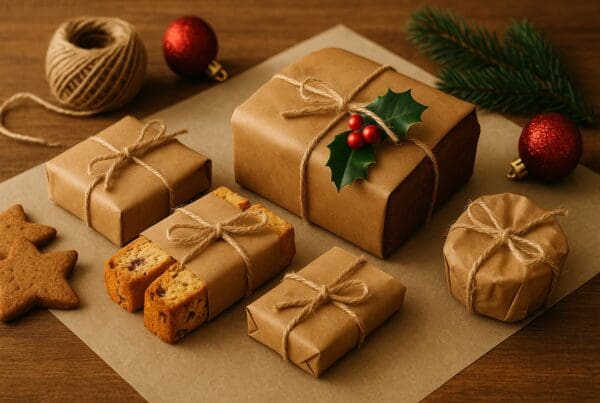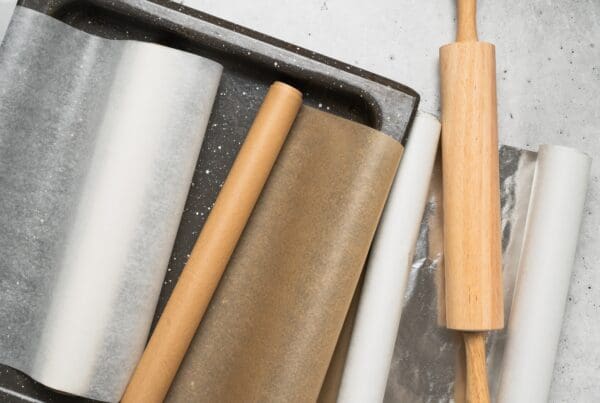Non-stick baking’ paper is not the same as ‘greaseproof’ paper and it’s good to know the differences so you can choose the best one for the type of baking you are doing.
The non-stick baking paper has a thin silicone coating to prevent your baking from sticking to oven trays and cake tins without having to grease with butter or oil. Generally, it is heat-resistant up to 220°C (200°C fan-forced).
You can still use it at temperatures above this but it will tend to brown around the edges. Top tip – use two sheets on either side of your pastry when rolling out. It does away with the need to use flour to stop it from sticking to the benchtop or rolling pin.
It can also be used to make paper icing bags and for wrapping food to cook ‘en papillote’.
Greaseproof paper lacks a silicone coating but, as the name suggests, resists grease. You can line trays and tins with it when baking, but remember to grease both sides or it will stick.
Let your baking cool before peeling it away. This makes removal easier and reduces sticking. Its thinner texture makes it ideal for lining a tart case before adding pastry weights during blind baking, as it moulds into the pastry case more easily. It usually resists heat up to about 200°C (180°C fan-forced). Greaseproof paper also works well for wrapping and storing food.
Then there is ‘waxed’ paper, unsuitable for oven use and therefore not recommended for baking. As the name suggests, it has a thin wax coating, ideal for sandwiches, fresh storage, and wrapping high-fat or moist foods. However, it performs poorly when heated—so don’t even try!
Whatever your needs are, there is a paper to suit them. Food Paper offers kraft, wax, baking, and more, available in any size
Discover more about Linwood Raker at www.linwoodraker.co.uk
Want to try Food Paper (our recyclable and sustainable siliconised baking paper) for FREE? Request your trial here




